A paludarium, also called aquaterrarium or waterfall aquarium, is the fusion of an aquarium with a terrarium. Mostly, paludaria are used as a habitat for amphibious animals such as frogs or semi-aquatic crabs, but also for reptiles such as turtles. Typically, an aquatic part passes into a land area. There is a special form of the paludarium, the so-called "riparium". It is dedicated to the design of a riparian zone. Paludaria replicate swamp-like biotopes, accompanied by a higher air humidity. In order to maintain these conditions, special technical or structural measures are necessary.
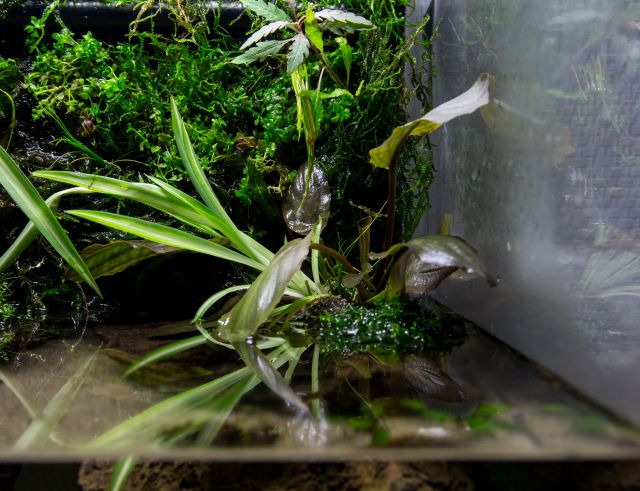
In addition to paludaria in which animals are kept, there are also layouts with a focus on aquatic plants alone. These forms are closely related to the plant cultivation forms of Wabi-Kusa and the dry-start method. Due to the special design of a paludarium, aquarium plants can be cultivated and viewed both in their submerged (below the waterline) and emerged (above the waterline) forms.
Necessary equipment
The technical equipment needed for a paludarium is quite similar to that of an aquarium, for example the filtration and the lights. The technical equipment should, however, be adapted to the slightly different circumstances. An important factor to be reckoned with in an aquaterrarium or paludarium is the high humidity. We will take a closer look at the individual points below.
Glass tank
For aquaterrariums, usually a special design of a glass container is used. There are closed tanks with a lid and open systems. The latter versions often have a much lower front pane, which gives the onlooker an unhindered view of the design. Quite frequently the front panes of paludaria are more or less opaque (and not really attractive) due to condensation. Attention: If you're planning to keep animals like crabs in your paludarium that like to wander off, you need to choose a closed system! Basically you can convert a classic aquarium into an aquaterrarium or paludarium quite easily, simply by making slight adaptations to the technical equipment to the new conditions.
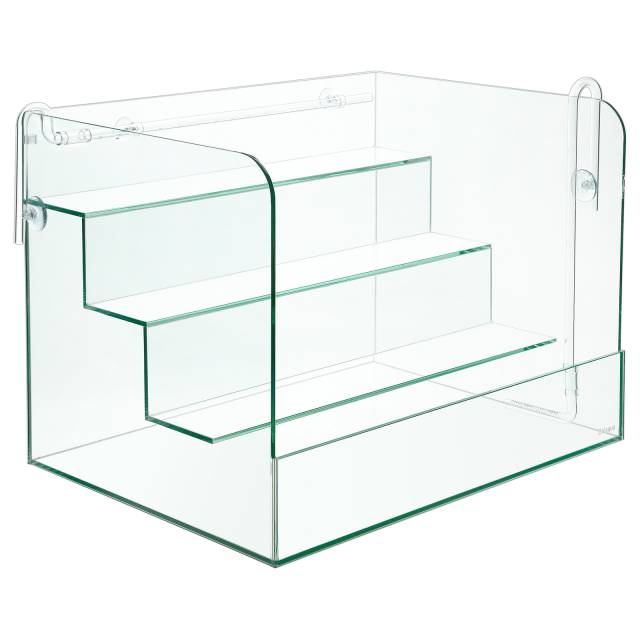
The Do!aqua waterfall aquarium is a typical waterfall aquarium with a low front pane. An extra deep glass filter inlet and jet pipe serving as a filter outlet are included, matching the design. The glass steps inside the tank facilitate a design rising up towards the back of the tank, enhancing the waterfall effect.
Filtration
Basically, the aquatic part of a paludarium needs the same technical equipment as a classic aquarium. The water needs to be kept clean by use of an appropriate filter in this special form, too. You'll need to consider the small amount of water in a paludarium, or rather the low water level in the tank when you choose a filter, though. Some internal filters (for example the corner filter by Dennerle) can be operated horizontally and are therefore particularly suitable for lower water levels. If you plan on using an external filter, you'll need to adapt the in- and outflow pipes to the water level. The inflow should reach down far enough so it doesn’t take in air. As a filter outflow, we recommend a spray bar or another multichannel solution. For example, you could split the end of a thick filter hose into three smaller hoses with a 4/6 mm diameter. This slows down the water flow significantly. With this little trick, you can water different plant groups individually and precisely.
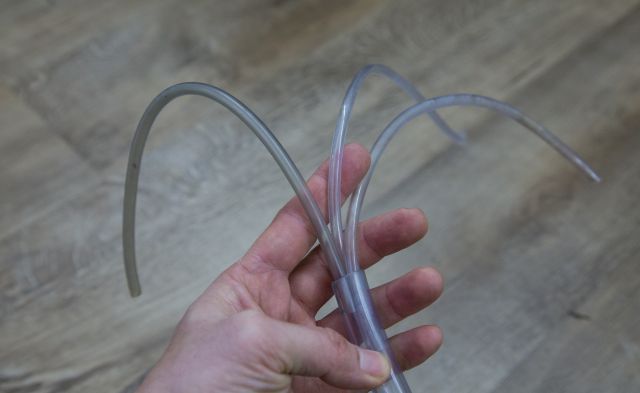
Lighting
The lighting system should be chosen in a way that provides light to the plants both below and above the waterline. Here you can fall back on lighting systems that can be installed, for example, very high up. In this way, higher hardscape arrangements and plants can be accomodated. A good choice would be the ADA Aquasky High Type or the A-plus series by Chihiros.
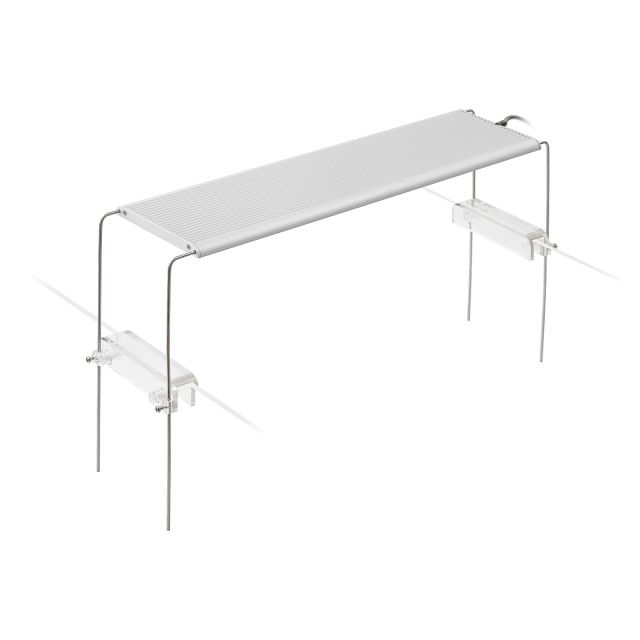
Humidity
Please pay particular attention to the air humidity in your paludarium, aquaterrarium or waterfall aquarium. If you keep typical aquarium plants in their emerged form at normal room humidity, they will most likely dry up and die. The humidity can be kept at a sufficient level in a closed system much more easily than in an open paludarium. When you use an open tank, you need to spray the plants with water on a regular basis, which can be done manually (with a handy spray bottle) or automatically with the help of some appropriate technical equipment. Sprinkler systems and ultrasonic foggers available for terraria are quite suitable for this purpose, for example. An easy alternative to this is the method of sprinkling we've explained above, under the point "Filtration": the use of a multichannel filter outflow (e. g. a spray bar). When you arrange your hardscape layout and plants in a stepped design, simply place the filter outflows as high as possible in your paludarium, so the water can permanently flow downwards over the plants, stones and wood and supply them with enough moisture on the side.
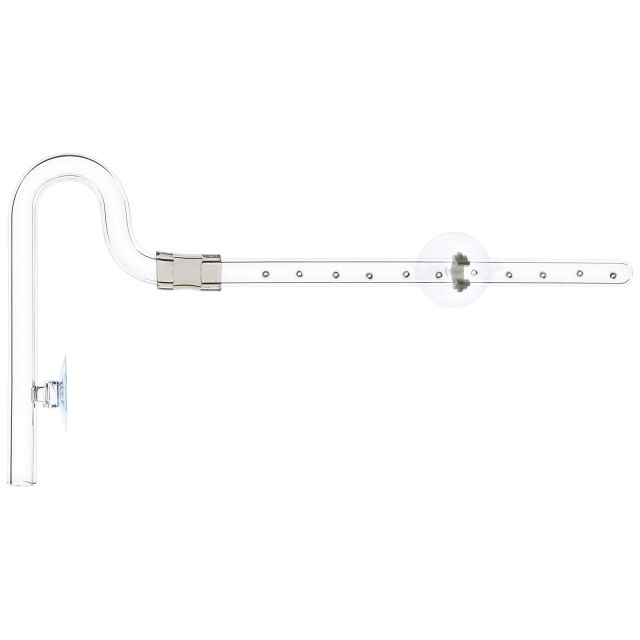
Miscellaneous technical equipment
If higher temperatures are required (e. g. for some paludarium animals), you should install a heater. Here, too, you can fall back on more compact and shorter variations (e. g. the Dennerle Nano ThermoCompact). If you want to supply your submerged plants with an optimum amount of nutrients, a CO2 system is indispensable. As with the filter tubes, the low water level must be taken into account, so you'll need to choose a diffuser that can be installed deeply enough.
As of late, the DOOA series from Aqua Design Amano has been made available in Europe. This new series places its focus on paludaria and Wabi-Kusa plant arrangements and offers beautifully designed products required for successfully running an aquaterrarium. Designs that place aquarium plants in the focus are central for the brand.
Example for a setup
Last but not least, we’d like to show you an awesome scape by Sascha Hoyer. See for yourself the beautiful design that can be created in a paludarium. For this scape, Sascha used a Do!aqua waterfall aquarium.
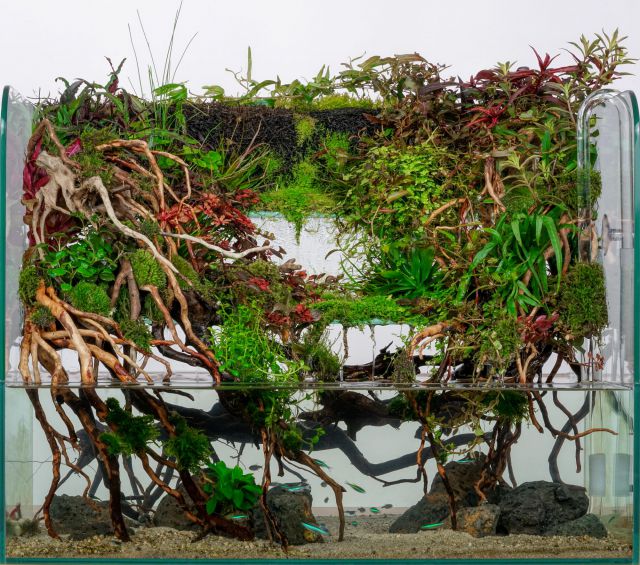
Copyright by Alexander Bachmayer.